On June 2, 2025, the second round of direct negotiations between Russian and Ukrainian delegations concluded at the Çırağan Palace in Istanbul. Lasting just over an hour, the meeting did not yield significant breakthroughs on major political issues but provided cautious optimism, particularly in humanitarian matters.
Key Outcomes and Agreements
- Major Transfer of Soldiers’ Remains
A significant humanitarian arrangement agreed upon during the talks involves a large-scale transfer of soldiers’ remains, initially described as a “6000-for-6000” formula. Russia confirmed it will unilaterally hand over the bodies of 6,000 Ukrainian soldiers, currently stored in refrigerated facilities, to Ukraine next week.
However, discrepancies arose in public statements by both delegations. Vladimir Medinsky stressed Russia’s unilateral commitment, underscoring substantial disparities in battlefield losses. Ukrainian representative Rustem Umerov portrayed the arrangement as symmetrical, though prior agreements indicated ratios heavily skewed against Ukraine. Observers express skepticism about Ukraine’s ability to reciprocate adequately, given historical imbalances. There is also concern that Kiev might supplement the numbers with unidentified bodies from civilian morgues, potentially undermining the transparency and credibility of official statements.
- Prisoner and Seriously Injured Personnel Exchange
Both parties agreed on the largest prisoner exchange since the start of the conflict, based on an “all-for-all” principle, specifically targeting:
- Seriously injured and severely ill soldiers;
- POWs aged 18–25 years old (though it was noted that the majority of POWs exceed this age bracket). A minimum exchange threshold was set at no fewer than 1000 individuals.
After fulfilling these conditions, such exchanges are intended to become regular and as depoliticized as possible.
- Russian Memorandum and Proposal for Temporary Ceasefire
The Russian delegation handed over a detailed draft memorandum outlining potential steps toward conflict resolution. Ukraine has one week to study and analyze the document.
Additionally, Russia proposed a specific temporary ceasefire for 2–3 days in select frontline areas to collect the bodies of fallen soldiers. Rustem Umerov, head of the Ukrainian delegation, confirmed receipt of the document but stated clearly that no comprehensive ceasefire agreements or a meeting between Presidents Vladimir Putin and Volodymyr Zelensky were reached.
Full text of the Russian memorandum:
Proposals of the Russian Federation (Memorandum)
on the settlement of the Ukrainian crisisSection I
Main parameters of the final settlement
- international legal recognition of the incorporation of Crimea, LPR [Luhansk People’s Republic], DPR [Donetsk People’s Republic], Zaporizhzhia and Kherson regions into the Russian Federation; complete withdrawal of AFU [Armed Forces of Ukraine] units and other Ukrainian paramilitary formations from their territories;
- Ukraine’s neutrality, which implies its refusal to join military alliances and coalitions, as well as a ban on any military activities of third states on Ukrainian territory and the stationing of foreign armed formations, military bases and military infrastructure there;
- termination and refusal to conclude in the future international treaties and agreements inconsistent with the provisions of paragraph 2 of this Section;
- confirmation of Ukraine’s status as a state that does not possess nuclear and other WMD [Weapons of Mass Destruction], with the establishment of a direct ban on their reception, transit and deployment on the territory of Ukraine;
- establishment of the maximum number of the AFU and other military formations of Ukraine, the maximum number of weapons and military equipment and their permissible characteristics; dissolution of the Ukrainian nationalist formations within the AFU and the National Guard;
- ensuring the full rights, freedoms and interests of the Russian and Russian-speaking population; granting Russian the status of an official language;
- legislative prohibition of glorification and propaganda of Nazism and neo-Nazism, dissolution of nationalist organizations and parties;
- removal of all existing and refusal to introduce new economic sanctions, bans and restrictive measures between the Russian Federation and Ukraine;
- resolution of a set of issues related to reunification, families and displaced persons;
- renunciation of mutual claims in connection with the damage caused in hostilities;
- lifting restrictions on the UOC (Ukrainian Orthodox Church);
- phased restoration of diplomatic and economic relations (including gas transit), transportation and other communications, including with third states;
Section II
Conditions of the ceasefireOption 1.
Beginning of the complete withdrawal of the AFU and other Ukrainian paramilitary forces from the territory of the Russian Federation, including the DPR, LPR, Zaporizhzhya and Kherson regions, and their withdrawal to a distance from the borders of the Russian Federation agreed upon by the Parties, in accordance with the approved Regulations.
Option 2. “Package proposal”:
- a ban on redeployment of the AFU and other paramilitary formations of Ukraine, except for movements for the purpose of withdrawal to a distance from the borders of the Russian Federation agreed upon by the Parties;
- cessation of mobilization and the beginning of demobilization;
- cessation of foreign supplies of military products and foreign military aid to Ukraine, including satellite communications services and provision of intelligence;
- exclusion of military presence of third countries on the territory of Ukraine, cessation of participation of foreign specialists in military actions on the side of Ukraine;
- Guarantees of Ukraine’s refusal to engage in sabotage and subversive activities against the Russian Federation and its citizens;
- Establishment of a bilateral ceasefire monitoring and control center;
- Mutual amnesty for “political prisoners” and release of detained civilians”;
- Abolition of martial law in Ukraine;
- Announcement of the date for the elections of the President of Ukraine and the Verkhovna Rada, to be held no later than 100 days after the lifting of martial law;
- Signing of the Agreement on the implementation of the provisions contained in Section I.
Section III
Sequence of steps and timeframes for their implementation
- Commencement of work on the text of the Treaty;
- declaration of a 2-3 day ceasefire to collect the bodies of the dead in the “gray
zone” to collect in the ‘gray zone’ the bodies of the victims;- unilateral transfer to the RS of 6,000 bodies of AFU servicemen;
- signing of a Memorandum of ceasefire with specific dates for the fulfillment of all its provisions determining the date for the signing of a future Final Settlement Treaty (hereinafter – the Treaty);
- a 30-day ceasefire regime is established from the moment the withdrawal of the AFU begins. The complete withdrawal of AFU units from the territory of the Russian Federation and the full implementation of the “package agreement” must be accomplished within these 30 days;
- holding of elections and formation of government bodies on the territory of Ukraine;
- signing of the Treaty;
- approval of the signed Treaty by a legally binding resolution of UNSC-1;
- ratification, entry into force and implementation of the Treaty.
- The Sensitive Issue of Children
Ukraine presented Russia with a list of 339 children, demanding their return and alleging unlawful deportation. Vladimir Medinsky, head of the Russian delegation, dismissed this as a “show for compassionate Europeans,” emphasizing that no children were abducted by Russia; rather, they were rescued by Russian soldiers during active combat.
Russia stated it had already returned 101 children to Ukraine, whereas Ukraine had transferred only around 20 back to Russia. Medinsky promised that each case from the new list would be carefully examined, pointing out that previously, similar claims involved 150 children who turned out to be located in Germany rather than Russia.
- Language of Negotiations and Turkey’s Diplomatic Assessment
Interestingly, negotiations were held entirely in Russian, despite sharp political differences.
The Turkish Ministry of Foreign Affairs, which hosted and mediated the talks, described the results in a notably cautious diplomatic term, calling the negotiations “not negative.” This newly coined diplomatic phrasing suggests careful optimism.
- Proposal for a New Meeting
Ukraine proposed holding the next round of talks with Russia between June 20–30, 2025.
Context: Escalation Prior to Negotiations
These discussions took place amid a noticeable escalation in hostilities. Prior to the meeting, Ukraine launched a major drone attack on Russian military airfields, destroying and damaging a significant number of aircraft. In response, Russia conducted substantial missile strikes against targets in Ukrainian territory.
Against this backdrop, Ukrainian President Volodymyr Zelensky urged the international community to strengthen sanctions against Russia if no progress is made during negotiations. The U.S. and EU are actively considering intensified sanctions, including additional restrictions on Russian oil prices.
Analysis and Conclusions
The Istanbul talks underscored the persistent, profound disagreements between Russia and Ukraine on key political and military issues. Nevertheless, both parties managed to find common ground, at least in the humanitarian sphere, focusing on prisoner exchanges and the return of soldiers’ remains.
These humanitarian agreements, particularly of such scale, could serve as an initial step toward more constructive interaction and a gradual de-escalation. However, significant differences and mutual mistrust remain deeply entrenched.
Russia’s detailed memorandum and the proposal for a temporary ceasefire represent meaningful diplomatic initiatives. If accepted by the Ukrainian side, these measures could notably reduce the intensity of hostilities.
Vladimir Medinsky after the negotiations
At present, only one thing is clear: despite cautious diplomatic optimism and humanitarian progress, comprehensive political solutions remain distant. A meaningful peace process will require persistent diplomatic efforts, constructive dialogue, and mutual readiness for substantial compromise from both sides.
Therefore, the Istanbul meeting on June 2, 2025, should be seen as more of a starting point for potential ongoing dialogue rather than a genuine breakthrough. Nonetheless, even such modest progress is significantly better than a complete cessation of diplomatic interaction.
MORE ON THE TOPIC:



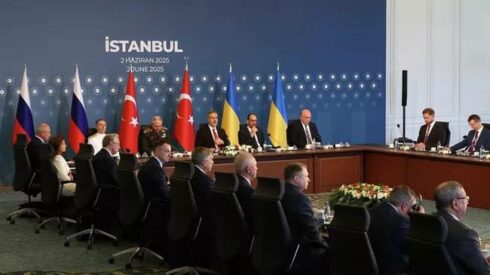
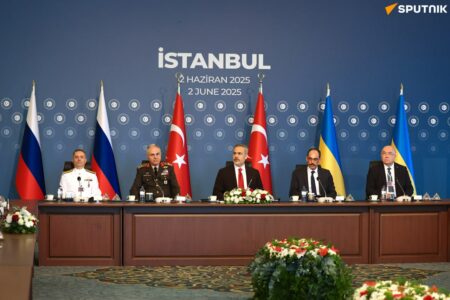
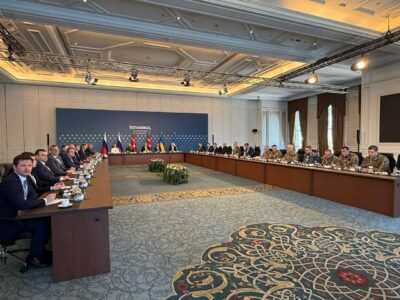
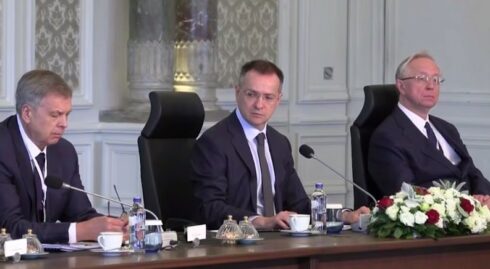
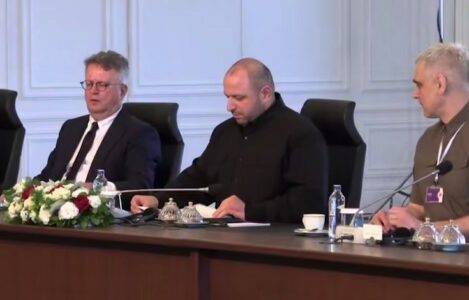
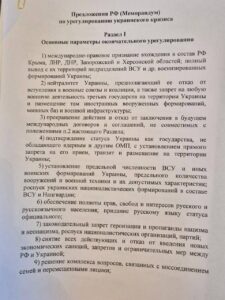
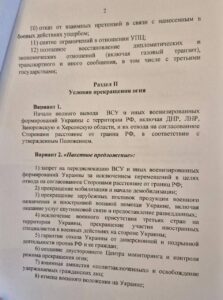
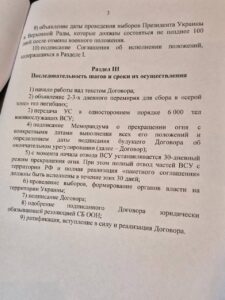



dead end. it means ukraine end.
if ukraine agrees, that means that it accepts its defeat.
as they still hope for a victory they will never accept that proposal
unless zelinsky is eliminated the war will become more deadly and vicious.
ukraine’s victory is that it keeps its remaining oblasts east of the dnieper.
the protests which occurs in turkey are turkish government fault because erdogan did not ban (anti-erdogan propaganda channels on youtube in the past)
the channels like erdaler,fatihaltayli provacated turkish people. as a result these turkish youtubers who are supported by youtube with the salaries, broadcasted live on their channels at the same time and invited people to the streets, these youtube channels are same as tv channels without anycontrol and inviting people to protest
as a smart president erdogan understand what is happening and this month the government started banning these anti erdogan propaganda youtube channels. but its too late.
putin 4 years ago started banning russian oposition channels and putin opened russian youtube for russian people when russian – ukranian war started.
this is a joke? why kiev is not in flames? because russia is run by billionaries livin large! well the tsars lived that way… until someday something happened!
when will europe help the ukraine build cars that also have a forward gear?
when ukronazis reinvent the bicycle, target 2080……
certainly not the french.
no retreat no surrender!
bring it you orc shit-monsters!!!
heheheh
your goose is cooked, from the moment you overthrew your democracy and installed your beer hall putsch government.
so much ukrainian retreating for the last eleven years. plenty of surrendering by ukrainians who managed to avoid being turned into taco meat like so many of their brothers.
put put still believes in romance with the blond american useless idiot
you always go on about relationships… are you female? :)
vanya the perfect american–an idiot and useless
nwo government making deals!… this drone attack on the russian federation’s air bases was pure bs.
calling all historians…
i’m struggling to think of a war in history where the defeated party retreated by more square kilometers than the ukraine!
we should call the guinness world records!
pretty soon it’ll be up to a village an hour and a town a day.
russia won–humiliated amerikans more desperate daily as their dystopia collapses into ugliness crime mental illness bitterness immorality technical failure….”only in amerika do people act like machines are treated like machines and only in amerika are machine metaphors used to describe human behavior”. geoffrey gorer
obviously true for new zealand canada…”amerikans are the most conformist people on earth—only in canada and new zealand does thew technique of the police state rival usa”. jacque ellul
6,000 ukrainian cold corpses multiplied by the $410,000 one time payment to the families of ukrainian fallen soldiers equals 2,460,000,000 us dollars. that’s a very expensive price tag to pay for those departed. so how much is 1.7 million dead ukrainian soldiers multiplied by $410,000? and nato is partying because they say they destroyed a couple billion worth of replaceable strategic bombers. ukraine is broke. financially & demographically. all for nato
ukraine is a whore with no self respect. no self respect means nobody else respects you, not even your clients
in my americunt paradise i am bitter terrified of mulattos and obese ugly females that rule my matriarchy—as inferior species mentally ill our alias has 13 genders
“since amerikan political technique is inferior they must deploy more resources and use propaganda ” jacque ellul
“the problem w amerikans is not orwellian it is huxleyan–amerikans love their oppression”. neil postman
look at what crap did putin gave to north korea same crapt that allow turkey bayracters to destroyed and take over syria.same crap in iran.but s400 in turkey and india which are led by usa remote control devices.
biden call putin killer and trump called putin crazy.just because russia take out enemy facilities.but when russia gets attacked with west intellegence help their pretend to sympathies.what joke lies.
a bunch of criminals living in the palace. why aren’t these special people at the front?
west cannot be trusted with any treaties. if you sign anything with the slimey western weasels, be sure they will be using the time to re-arm and plot new schemes. as long as russia is aware of that and does not have illusions like minsk 1 and 2, it can use the time to do the same
this is the truth. the native americans tell this some hundred years ago.
remember, the west a few hundred years ago in europe put animals on trial and gave them human lawyers. we are dealing with neanderthals dressed in gucci, nothing more
russian have defeated all nato–americunts only negotiate in their gay bars
what has the ukrainians really furious is the 6000 bodies. these soldiers – and russia claims to identified them all – are still listed as active by the uaf, and their commanders are pocketing the paychecks that the us taxpayer is so obligingly paying for.